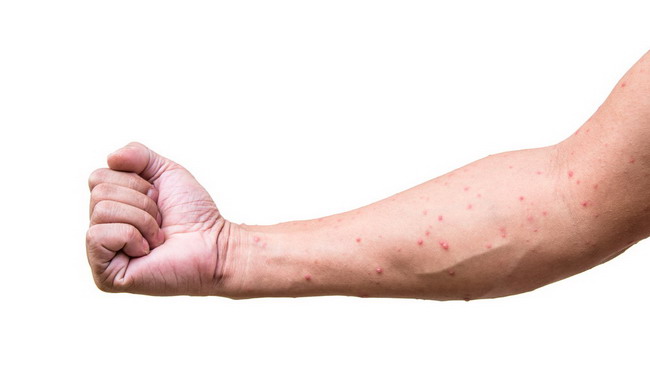Hypersensitivity reactions to drugs or often known as drug allergies, especially those concerning the skin (CADR / Cutaneous Adverse Drug Reaction) are very common in HIV(Human Immunodeficiency Virus) positive patients. The incidence reaches 50% of patients taking HIV drugs, and it causes significant morbidity in the era of ART (antiretroviral) therapy. The incidence of CADR also increases 100 times in patients who are not treated as well as in a state of severe immunodeficiency.
Antiretroviral therapy has increased life expectancy and even the quality of life of 33.4 million HIV patients worldwide. However, like most drugs, antiretroviral therapy may also cause hypersensitivity reactions. The most frequent manifestation of drug hypersensitivity is CADR (Cutaneous Adverse Drug Reaction). The patient will experience exanthema without systemic or redness symptoms, maculopapular rash with fever, muscle pain/myalgia, joint pain/arthralgia, and stiffness. Hypersensitivity reactions may also involve internal organs, causing hepatitis, pneumonitis, myocarditis, pericarditis, and nephritis. In less than 0.5% drug hypersensitivity patients will experience Stevens Johnson Syndrome(SJS) or Toxic Epidermal Necrolysis (TEN).
Research conducted abroad states that as many as 8.2% of dermatological diagnoses in HIV patients are CADR. The most frequent clinical manifestations of CADR are morbilliform rash followed by urticaria, erythema multoformis, vasculitis, and photodermatitis. In this study it was stated that cotrimoxazole triggers CADR in HIV positive patients. Risk factors associated with drug hypersensitivity reactions were women, CD4 + T <200μL cell counts, CD8 + T > 460μL cell counts, and history of previous drug hypersensitivity.
A retrospective study conducted at HIV ward of RSUD Dr. Soetomo Surabaya in 2013-2015 showed that 62.5% of CARDs were associated with ART. CARD is most commonly experienced by men (65%), aged 25-44 years (85%). Patients diagnosed with CARD showed maculopapular rash (65%) while other patients were diagnosed with Stevens Johnson Syndrome (20%), total redness (erythroderma) by 5%, and Toxic Epidermal Necrolysis (5%). The maculopapular rash often occurs on days 1-7 (45%), as does Stevens Johnson Syndrome and Toxic Epidermal Necrolysis. The study also found that the most common antiretroviral drug that causes CARD is nevirapine (45%). Nevirapine is also the most common drug causing Stevens Johnson Syndrome and Toxic Epidermal Necrolysis, which is 25% and 5% respectively.
Other studies have also found that nevirapine is the most commonly associated antiretroviral with CADR in outpatient HIV, which is 56.12% causing maculopapular rashes, 62.5% causes itching/urticaria. In the same study nevirapine caused four cases of Stevens Johnson Syndrome, two cases of pustular rash, and two cases of swelling/angioedema. Nevirapine itself is a first-line antiretroviral drug of NNRTI (Non-Nucleoside Reverse Transcriptase Inhibitor) most commonly used, besides nevirapine, an antiretroviral drug that is often thought to cause CADR, especially maculopapular rash are efavirenz, zidovudine, lamivudine, and atazanavir.
The risk of severe CADR is substantial in the first few weeks of antiretroviral therapy. Therefore, it is recommended to start nevirapine in half a dose (200 mg) during the first two weeks. However, a 1999 study comparing these recommendations with more gradual administration of therapy, 100 mg for the first week, 200 mg for the second week, 300 mg for the third week, and 400 mg for the fourth week, found that half-dose administration have more risk to stop due to a rash (8.5%) compared to the administration of gradual therapy (2.1%). Besides, the addition of antihistamines in phased therapy also showed satisfactory results in two of the three patients who previously failed treatment due to non-bullous rash.
It was concluded that drug hypersensitivity often occurs in patients with HIV positive with the most frequent clinical manifestations at RSUD Dr. Soetomo Surabaya is a maculopapular rash. This hypersensitivity is often associated with antiretroviral therapy, especially nevirapine, which is a first-line antiretroviral drug. Therefore, the administration of nevirapine can be done in stages to reduce the risk of hypersensitivity. Early diagnosis and prompt discontinuation of therapy are crucial for severe and dangerous reactions.
Author: Vidyani Adiningtyas
Details of the research available at:
https://www.pagepress.org/journals/index.php/dr/article/view/8059/7832
Cutaneous Adverse Drug Reaction in Human Immunodeficiency Virus Patient Associated with Antiviral Therapy: A Retrospective Study
Vidyani Adiningtyas,Cita Rosita Sigit Prakoeswa, Erwin Astha Triyono
Department of Dermatology and Venereology, Faculty of Medicine, Universitas Airlangga / Dr. Soetomo General Hospital, Surabaya, Indonesia





